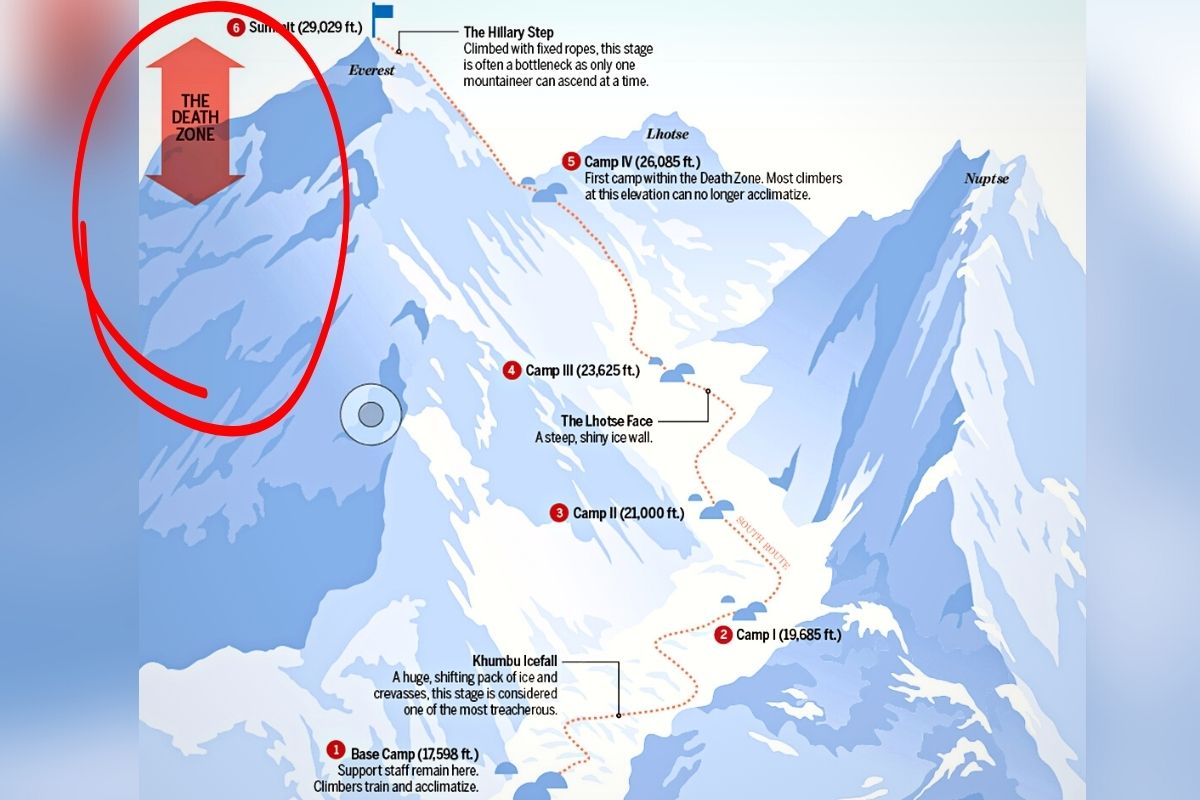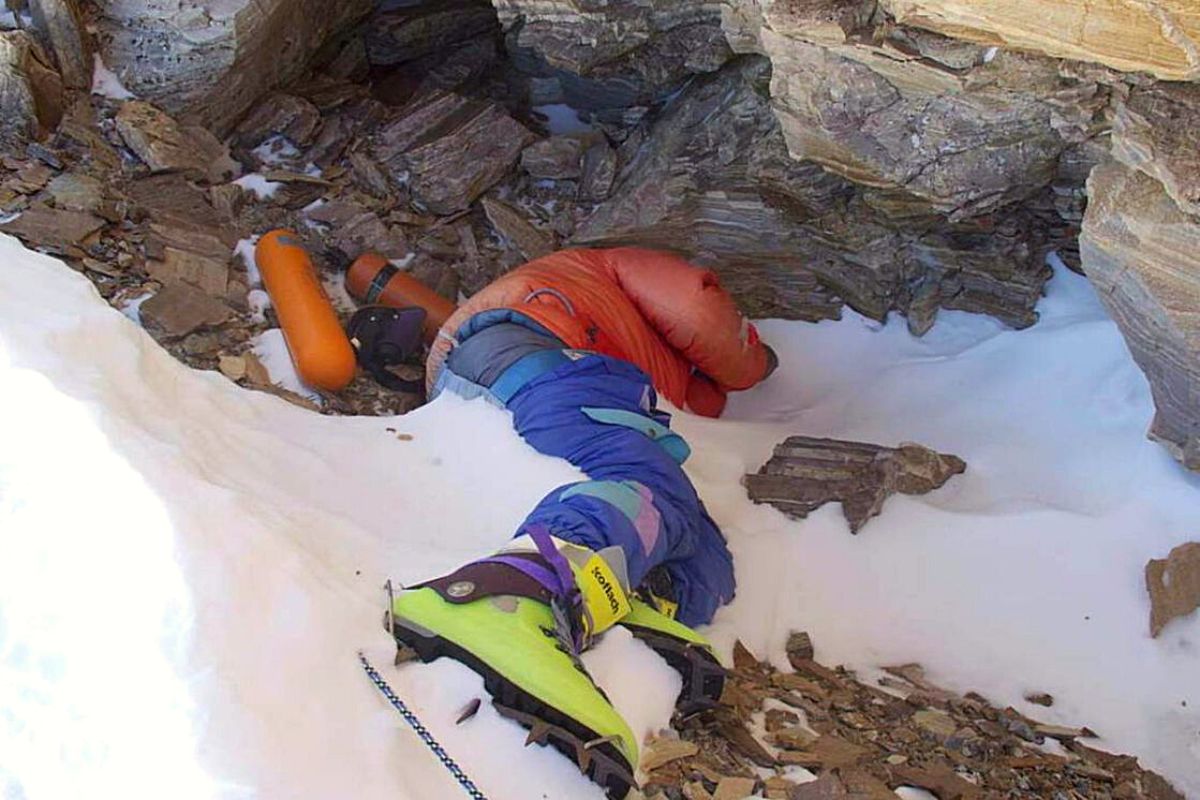
Mount Everest Rainbow Valley: Death Zone of Everest

Mount Everest Rainbow Valley: Death Zone of Everest
swotah travel
20832
27, 12 2022
You're an avid traveler and fond of risk-taking. You might have already gone through various daring adventures like the Great Barrier or submitted Mount K2 and more. But have you ever tried climbing Mount Everest and attempted to reach the Death Zone?
Let's say you've reached the summit of Mount Everest and are making your descent. As you make your way down, you notice something strange. Colors abound where there should be only white and black. What could this mean?
You've discovered Rainbow Valley, a beautiful and deadly place that earned the nickname "Death Zone." At an altitude of 26,000 feet, the air is so thin that it's difficult to breathe. The cold is intense, and the lack of oxygen can quickly lead to hypoxia or lack of oxygen in the blood.
In this article, you'll learn more about Rainbow Valley and the dangers that await those who venture into its midst.
Introduction to Mount Everest and the Rainbow Valley
Rainbow Valley might be eye-pleasing but is a very dangerous region. It is a colorful area on the slopes of Mount Everest in the Himalayas.
When you reach over the 5,600 meters (18,372 feet) of the north side of the mountain, you see Rainbow Valley. This is the famed spot near the summit of Mount Everest, where climbers can see a stunning rainbow stretching across the sky. You stop to take in the view and snap a few pictures before continuing.

Photo: Mount Everest Death Valley Map
But this is also where things can go from bad to worse quickly because you're now in the Death Zone of Mount Everest—an area above 26,000 feet where oxygen levels are so low that it's difficult for humans to survive for long periods of time.
The Risks of Entering the Death Zone
One of the main risks of entering the death zone is the potential for developing altitude sickness, which can occur when a person ascends to a high altitude too quickly, and their body cannot acclimate to the low oxygen levels. Symptoms of altitude sickness include dizziness, headache, fatigue, and difficulty breathing, ranging from mild to severe.
In severe cases, altitude sickness can lead to more serious conditions such as high altitude cerebral edema (HACE), a life-threatening condition in which fluid builds up in the brain, or high altitude pulmonary edema (HAPE), a condition in which fluid accumulates in the lungs.
Other risks of entering the death zone include extreme cold temperatures, strong winds, and exposure and frostbite. The death zone is also an extraordinarily isolated and isolated place, with little or no help available in the event of an emergency.
The descent from the summit is known as the "death zone." It's a treacherous journey that claimed the lives of many climbers in past years. Why? Because, at this point, your body is running out of oxygen. The air is so thin that it can't sustain human life for long. You're also battling extreme cold and fatigue, making walking difficult.
Many climbers have made it back down safely, but others haven't been so lucky. In 2017, a group of climbers lost their lives while descending from the summit in a freak blizzard.
So before you embark on your journey to Mount Everest, be sure to understand the risks involved—and be prepared for anything.

What to Expect in the Death Zone of Everest?
The first and foremost thing to do is buckle up with all the precautions.
The lack of oxygen in the air can cause serious physical and mental impairments, and prolonged exposure can lead to death. At these high altitudes, the body's ability to acclimatize to the thin air is significantly reduced, and even the most fit and experienced climbers can experience extreme fatigue, dizziness, and difficulty thinking clearly.
The thin air can also cause a variety of other physical problems, such as headaches, shortness of breath, and swelling of the hands and feet. In addition to the physical challenges, the death zone on Everest is also a very isolated and extreme environment, with extreme temperatures and harsh weather conditions. Climbers must be prepared for the possibility of frostbite, hypothermia, and other cold-related injuries.
This is why climbers call it "the Death Zone."
So, what should you expect if you find yourself in the Death Zone? Well, first and foremost, know that your chances of survival are slim.
Most climbers attempt to avoid the Death Zone altogether, but sometimes it's unavoidable. If you find yourself in this treacherous area, know that it's critical to take care of yourself and descend immediately if you start feeling ill.
Safety Guidelines and Preparations Before Entering the Death Zone
When exploring Rainbow Valley, remember that it is a place of extreme danger, and you should not take this journey lightly. It would be best if you were prepared with the right equipment and safety precautions before entering the death zone of Mount Everest.
To ensure your safety, you should have a climbing guide who is experienced in the area and someone who can give you advice on how to stay safe in Rainbow Valley. You should also ensure that you have the right supplies, such as oxygen tanks, food, water, and shelter. The air becomes unbreathable the higher you go in this area, so it's essential to be prepared with a reliable oxygen supply.
It's also essential to have suitable clothing and gear for cold temperatures at this altitude. Make sure to wear layers of moisture-wicking and insulating clothing, a good hat, gloves, and sunglasses. Don't forget adequate amounts of sunscreen as well! Finally, you must bring hiking boots that provide traction for slippery conditions.
Do I Need An Insurance?
Having insurance assures you compensation if any accident or mishap occurs during your expedition. That's why we suggest every climber get insurance before the summit. You can find several forms of insurance, like Life Insurance, Travel Insurance, and Health Insurance. It will cover your expenses for the medical treatment and compensate you with some financial help, like at a funeral or others in case you are dead.
Experiences of Climbers Who Have Visited the Rainbow Valley
If you've ever wondered what it would be like to visit the Rainbow Valley, you're not alone. Before you have experienced the death zone, many climbers can share their first-hand knowledge.
The stories of these brave souls are as varied as the colors of the rainbow. Some climbers have described it as an 'otherworldly experience,' surrounded by a stunning array of colors and feeling a sense of peace and awe. Others have said that being in the Rainbow Valley is like entering another world where time stands still and life slows down to a crawl.
Still, others have found themselves questioning the meaning of life while standing in the death zone, grappling with existential thoughts that they never had before. While it is not an experience that everyone will enjoy, it has left a lasting impression on many who have ventured into this mystical place on Mount Everest.
At the end of the day, it's important to remember that Mount Everest is a deadly place. The fact that it's also one of the most beautiful places on Earth is a testament to the power of nature. It's essential to be respectful of that power and remember those dangers lurking in even the most beautiful places.
Also Read: How Difficult Is Mt Nuptse Climb?
Frequently Asked Questions
Where is the death zone on Everest?
Death Zone aka Rainbow Valley on Everest, is located at an altitude of 8,000 metres (26,000 feet) above sea level. The air is so thin and the oxygen level is insufficient to support human life - that’s why it is called the Death Zone.
How long can you survive in the death zone?
The survival time depends on your body's stamina, endurance, and energy. But as per the mountaineering scholars, you are not supposed to be in the Death Zone for over 16 to 20 hours.
How many people have died in the Death Zone?
Over 200 climbers have lost their lives while summiting Mount Everest and most of them come from the Death Zone itself.
NEWSLETTER SIGNUP
Sign up to receive our trip ideas and travel offers!
Get updates and Exclusive Offers up to 20% Discount








